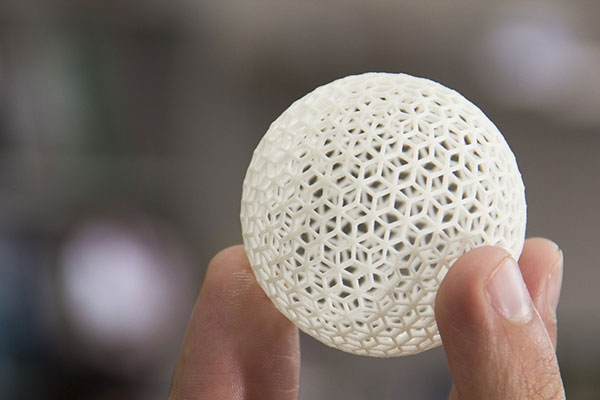 According to International Data Corporation (IDC), the global spend on 3D printing technologies is expected to reach nearly $12 billion in 2018. As 3D printers become more popular in the enterprise, there is increased need for materials that can be used throughout the entire product development cycle.
According to International Data Corporation (IDC), the global spend on 3D printing technologies is expected to reach nearly $12 billion in 2018. As 3D printers become more popular in the enterprise, there is increased need for materials that can be used throughout the entire product development cycle.
3D printing using improved-performance thermoplastics has potential in almost all manufacturing environments, but especially in electronics, automotive and aerospace industries. A large car manufacturer might use a specific plastic to create the majority of its parts and find value in 3D-printing prototypes or to print an end-use part immediately.
High end 3D-printing of polymers is seeing an important convergence between additive manufacturing and specialty polymers technology. This requires a collaboration between the manufacturers of 3D printing machines and speciality materials suppliers.
Looking for 3D printing materials?
Find technical data, manufacturer literature, UL Yellow Cards, supplier contact details and more in Prospector.
Search Additive Manufacturing materials now
Industrial-grade engineering materials for 3D printing
Ultimaker has been manufacturing 3D printers since 2011. At Rapid + TCT, a 3D printing and additive manufacturing event, the company announced collaborative alliances with global material companies to meet the growing demand for industrial-grade engineering materials that are compatible with Ultimaker 3D printers.
Ultimaker has partnered with DSM, BASF, DuPont Transportation & Advanced Polymers, Owens Corning, Mitsubishi, Henkel, Kuraray, Solvay and Clariant as part of an alliance program to enable high level engineering plastics and composites on Ultimaker machines.
Ultimaker will provide software to allow the collaborating materials suppliers to generate and maintain material profiles so customers can reliably use the materials on Ultimaker 3D printers. With these profiles, users will be able to print automatically, using preconfigured settings available in the 3D printing software Ultimaker Cura.
At Hanover Messe at the end of April, the company unveiled the Ultimaker S5, the latest expansion of its professional 3D printer portfolio. It has a larger build volume (330x240x300mm) for printing functional prototypes, manufacturing tools, and end-use parts.
The Ultimaker S5 also features an improved feeder system with a filament flow sensor that auto-pauses and resumes when materials run out, without affecting print quality. The enhanced bed-levelling ensures a perfect first layer and continuously compensates the print bed while printing, which allows unattended use of the Ultimaker S5. The free Ultimaker App allows users stay updated on the print’s progress from a phone or tablet where ever they are.
The Ultimaker S5 can print with a wider range of materials, from PLA to advanced engineering plastics, including nylon and polycarbonate. Ultimaker Tough PLA exhibits an impact strength similar to Ultimaker ABS, but with higher stiffness. It is less brittle than regular PLA and gives a more matte surface finish quality.
“We use 3D printing not only to create extremely useful manufacturing aids and prototypes for Airbus and other customers, but also as a learning tool to prepare the workforce for tomorrow,” says Prof Axel Herrmann, CEO of Composite Technology Center (CTC). “Because of the ease of use of the Ultimaker S5 and the low costs involved with Ultimaker FDM 3D printing, we can easily make several iterations before reaching a final, even better design and still shrink lead times from weeks to days.”
“In 2017, we estimated that we avoid around €325,000 of costs by 3D-printing multiple tools and fixtures with Ultimaker 3D printers,” says Luis Reis, Pilot Plant Engineer at Volkswagen. “The enhanced feeder on the Ultimaker S5, designed to print with advanced technical plastics such as composite materials, allows us to print reliably with an even wider range of industrial-grade materials, which is a great benefit for us.”
PEEK and PPSU filaments
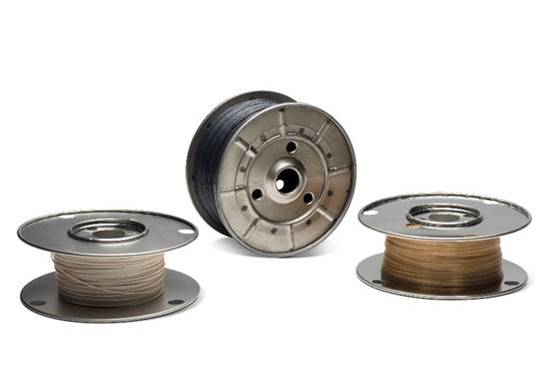
Based on the high-performing KetaSpire polyetheretherketone (PEEK) and Radel PPSU polymers, Solvay unveiled three filaments at RAPID + TCT 2018. They represent the advanced guard in what Solvay plans to become a broader portfolio of specialty polymer filaments and powders designed specifically for high-end additive manufacturing (AM) applications.
Two of the three filaments are based on KetaSpire PEEK: a neat PEEK product and a 10% carbon fibre-reinforced grade. Both are designed for excellent fusion of printed layers, high part density and exceptional part strength, including in the z-axis.
The third filament is based on Radel. It offers high transparency, excellent elongation and superior toughness for 3D-printed parts.
Sources at Solvay say that the company is further developing an AM-ready powder based on its NovaSpire polyetherketoneketone (PEKK) polymer, which will target AM applications in aerospace and healthcare.
The high-performance KetaSpire filament will also be the first PEEK polymer to be included in the e-Xstream engineering Digimat simulation software due for launch in June 2018.
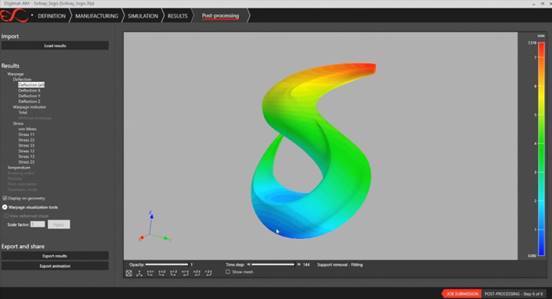
KetaSpire PEEK’s inclusion in Digimat represents Solvay’s latest step toward becoming the industry’s leading resource for successfully applying advanced polymers in 3D printing processes,” said Christophe Schramm, business manager for additive manufacturing at Solvay’s Specialty Polymers global business unit.
Part of the latest edition of Digimat 2018.1, Digimat for Additive Manufacturing will enable designers and engineers to accurately predict warpage and residual stresses of 3D-printed KetaSpire PEEK parts as a function of additive manufacturing processes, such as fused filament fabrication (FFF). Users can optimise their process and minimise part deformation before starting to 3D-print their parts.
Nanodiamonds boost 3D-printed polymer performance
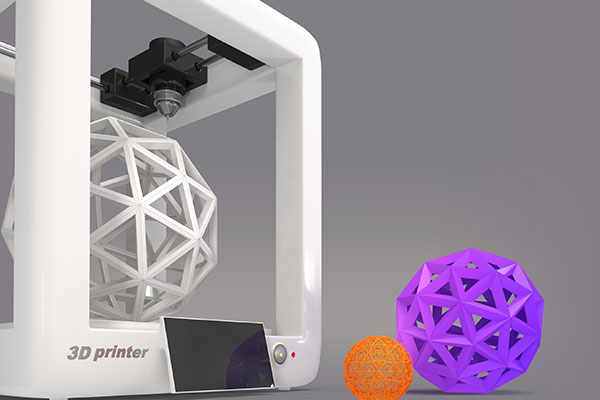 Finnish nanodiamond manufacturer Carbodeon and Dutch 3D printing specialist Tiamet 3D have collaborated to announce the first nanodiamond-enhanced filaments for 3D printing.
Finnish nanodiamond manufacturer Carbodeon and Dutch 3D printing specialist Tiamet 3D have collaborated to announce the first nanodiamond-enhanced filaments for 3D printing.
The Carbodeon/Tiamet 3D filaments are based on a jointly-patented technology which significantly improves the mechanical and thermal properties of 3D-printed items.
“By joining forces we’ve already developed filaments with a 100% increase in tensile strength, improved printability, and better thermal properties,” said Reid Larson, CEO of Tiamet 3D. “Printing also runs more quickly and more reliably with the addition of Carbodeon polymer-tailored nanodiamonds.”
“Nanodiamonds offer the potential to make 3D-printed components that perform as well as or better than comparable injection-moulded components, but with massive cost reductions and production speed improvements, especially for prototype, on-demand and short run production,” says Carbodeon CEO Vesa Myllymäki.
As well as improving thermal management, conductivity and tensile strength of the base polymer, nanodiamonds can increase the glass transition temperature of the end product or component to achieve more robust and reliable polymer products, suitable for more challenging environments.
The first Carbodeon/Tiamet 3D filaments will be polylactic acid (PLA) based, with further development focused on higher-performance thermoplastics. The companies have signed a strategic partnership agreement on joint filament development, along with an agreement for Carbodeon to supply nanodiamond materials to Tiamet 3D.
Selective laser sintering material
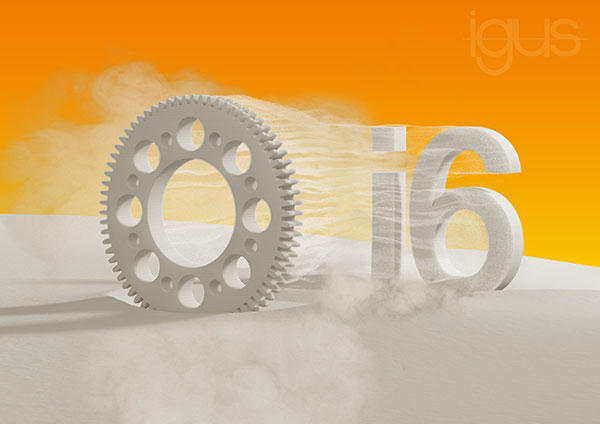 Motion plastics specialist Igus has expanded its 3D print range with a new selective laser sintering (SLS) material that is particularly suitable for the additive manufacture of gear wheels. Characterised by a wear resistance of at least six times that of standard materials, the Iglidur i6 material is well-suited for printing wear resistant parts, such as gears, offering a particularly long service life.
Motion plastics specialist Igus has expanded its 3D print range with a new selective laser sintering (SLS) material that is particularly suitable for the additive manufacture of gear wheels. Characterised by a wear resistance of at least six times that of standard materials, the Iglidur i6 material is well-suited for printing wear resistant parts, such as gears, offering a particularly long service life.
“Today, additive manufacturing is becoming an important topic in the industry,” says Igus director Robert Dumayne. “Special parts can be printed easily, cost-effectively and quickly, from individual parts up to medium size batches. The new Iglidur i6 material expands the existing range of six tribo-filaments for the fused deposition modelling (FDM) method and Iglidur i3 for the SLS process.”
At the company’s in-house test lab, a 3D-printed gear wheel made of Iglidur i6, was put through its paces to demonstrate its high wear resistance properties. The test used a worm wheel drive with 5Nm torque and 12rpm, and compared gears made from different materials. The SLS-printed PA12 gear failed after 521 cycles, as the heat generated by friction melted the plastic. The gear made of Iglidur i3 stopped at around 345,000 cycles. The Iglidur i6 gear was still fully functional after one million cycles, showing only minor wear.
The Iglidur i6 gear was also compared with machined gears. The gear made of POM (acetal) failed after 621,000 cycles, while the machined PBT (polybutylene terephthalate) gear stopped working after 155,000 cycles.
Resources:
- IDC Forecasts Worldwide Spending on 3D Printing to be Nearly $12 Billion in 2018
- Ultimaker Partners with Global Material Companies
- Solvay specialty polymers takes additive manufacturing to the next level
- E-Xstream Digimat simulation software
- Igus® expands additive production offering with second laser sintering material
The views, opinions and technical analyses presented here are those of the author or advertiser, and are not necessarily those of ULProspector.com or UL Solutions. The appearance of this content in the UL Prospector Knowledge Center does not constitute an endorsement by UL Solutions or its affiliates.
All content is subject to copyright and may not be reproduced without prior authorization from UL Solutions or the content author.
The content has been made available for informational and educational purposes only. While the editors of this site may verify the accuracy of its content from time to time, we assume no responsibility for errors made by the author, editorial staff or any other contributor.
UL Solutions does not make any representations or warranties with respect to the accuracy, applicability, fitness or completeness of the content. UL Solutions does not warrant the performance, effectiveness or applicability of sites listed or linked to in any content.



The printer is always playing an important part in our life every day. I can say this is really good content. I always want to add that the 3d printing convergence is so much important for printing making. Well Penned article.
Thanks for sharing valuable information with us. It really helped me understand the process.
Thanks for your sharing. If you’ve ever used plastic worm gears, you know how versatile and inexpensive they can be. While you might think that you need to lubricate worm gears regularly, it’s not necessary. Plastic worm gears are commonly made from MC nylon. They work with SUW and SW motors and require no lubrication. In addition, you can even use plastic worm gears without lubrication, which makes them ideal for many applications.
Absolutely. Often, polymer gears contain lubricating additives, such as PTFE or graphite, but as you rightly say, nylon is naturally lubricating and often performs without internal or external lubrication, depending on the circumstances.